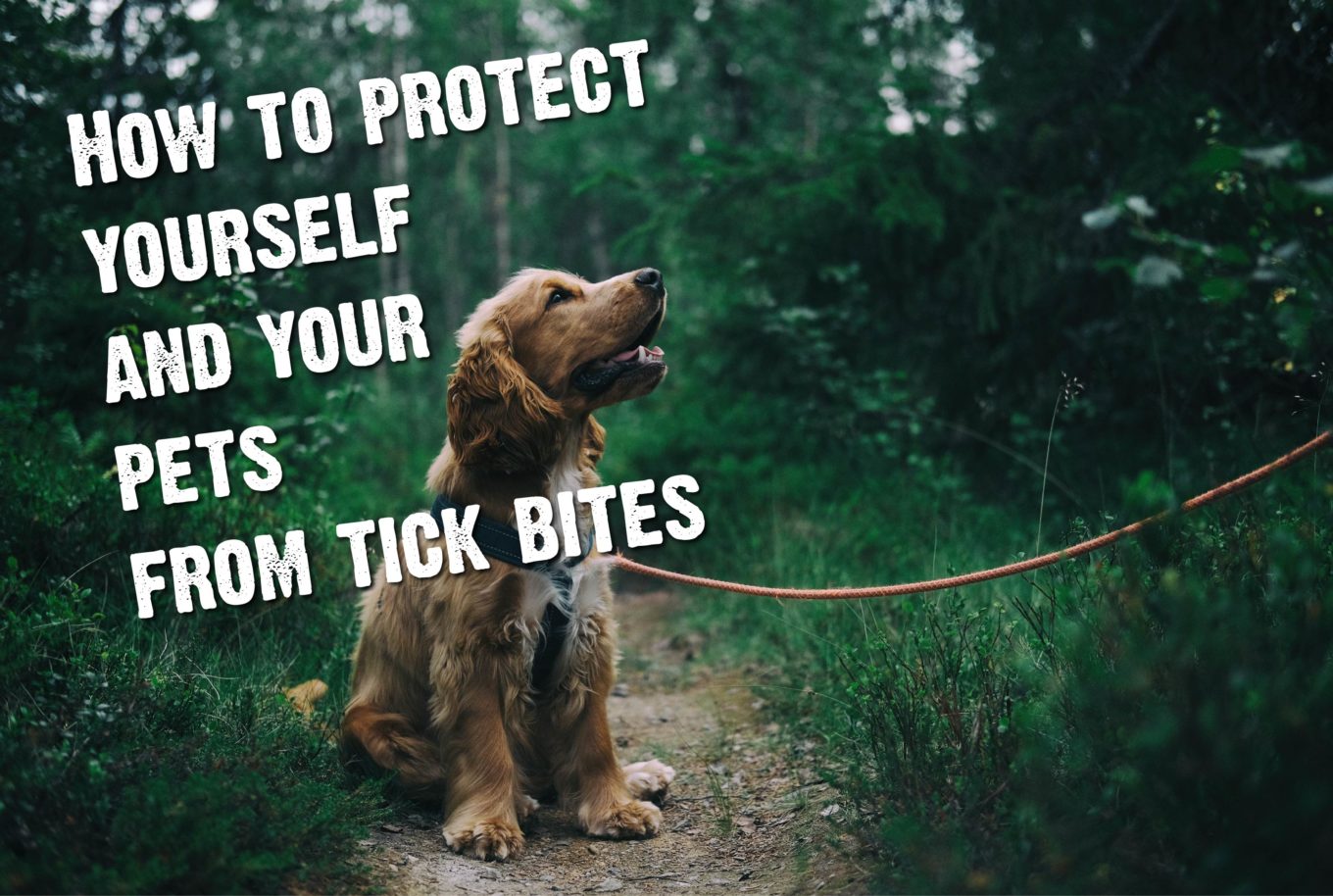
June 3rd, 2020
How to protect yourself and your pets from tick bites
By Robert Jones, ARCTEC
Ticks are most active during the warmer months, and this is when we spend most time outside, so spring is a good time to think about protecting yourself, and your pets, from tick bites.
Before you go outside
Ticks live in grassy and wooded areas, so if you plan to go outside for walking your dog, camping, or even gardening, you could come into close contact with ticks. So, it is best to be prepared! You can treat clothing and outdoor gear with products containing a low concentration (0.5%) of the insecticide permethrin. If you prefer, you can buy clothing and gear that is pre-treated. It is important to remember that cats can be very sensitive to tick prevention products, so you should not come into contact with cats when wearing treated clothing.
Insect repellents should also be used when you go outside. Repellents can provide protection on those parts of the body that are not covered with clothing, but you must follow product instructions. Finally, tuck socks into trousers to stop ticks crawling up your legs, and avoid wooded or brushy areas with lots of grass and leaf litter, both to protect yourself and your dog.
Dogs are susceptible to tick bites and tick-borne diseases, and can bring ticks into your home. There are many safe products on the market to prevent ticks, from spot-on treatments and sprays, to tablets and special collars impregnated with substances that infiltrate into your dog’s skin, killing ticks when they attempt to feed. You should speak with your vet about the best tick prevention products for your pets and about tick-borne diseases in your area.
When you come indoors
You should always check your clothing for any ticks that may have been carried indoors. Ticks can be removed from dry clothes through high heat in a tumble dryer, or by washing in hot water. Showering may help to remove unattached ticks on your body, and is a good opportunity to do a tick check. Look for attached ticks under the arms, in and around the ears, inside the belly button, the backs of the knees, in and around the hair, between the legs, and around the waist. Use a mirror if it helps. Children and pets should also be checked!
Seek help
If you have been bitten by a tick or visited an area in the past month where infected ticks are found, and you get flu-like symptoms, or you get a circular red rash, you should see a doctor. Tell them if you have been in forests or grassy areas. Similarly, seek help from a vet if you have concerns about a pet.
References
Centers for Disease Control and Prevention, 2019. Preventing tick bites https://www.cdc.gov/ticks/avoid/on_people.html
Centers for Disease Control and Prevention, 2019. Preventing ticks on your pets https://www.cdc.gov/ticks/avoid/on_pets.html
The Kennel Club, 2020. Ticks. https://www.thekennelclub.org.uk/health/for-owners/ticks/
NHS, 2018. Lyme disease. https://www.nhs.uk/conditions/lyme-disease/